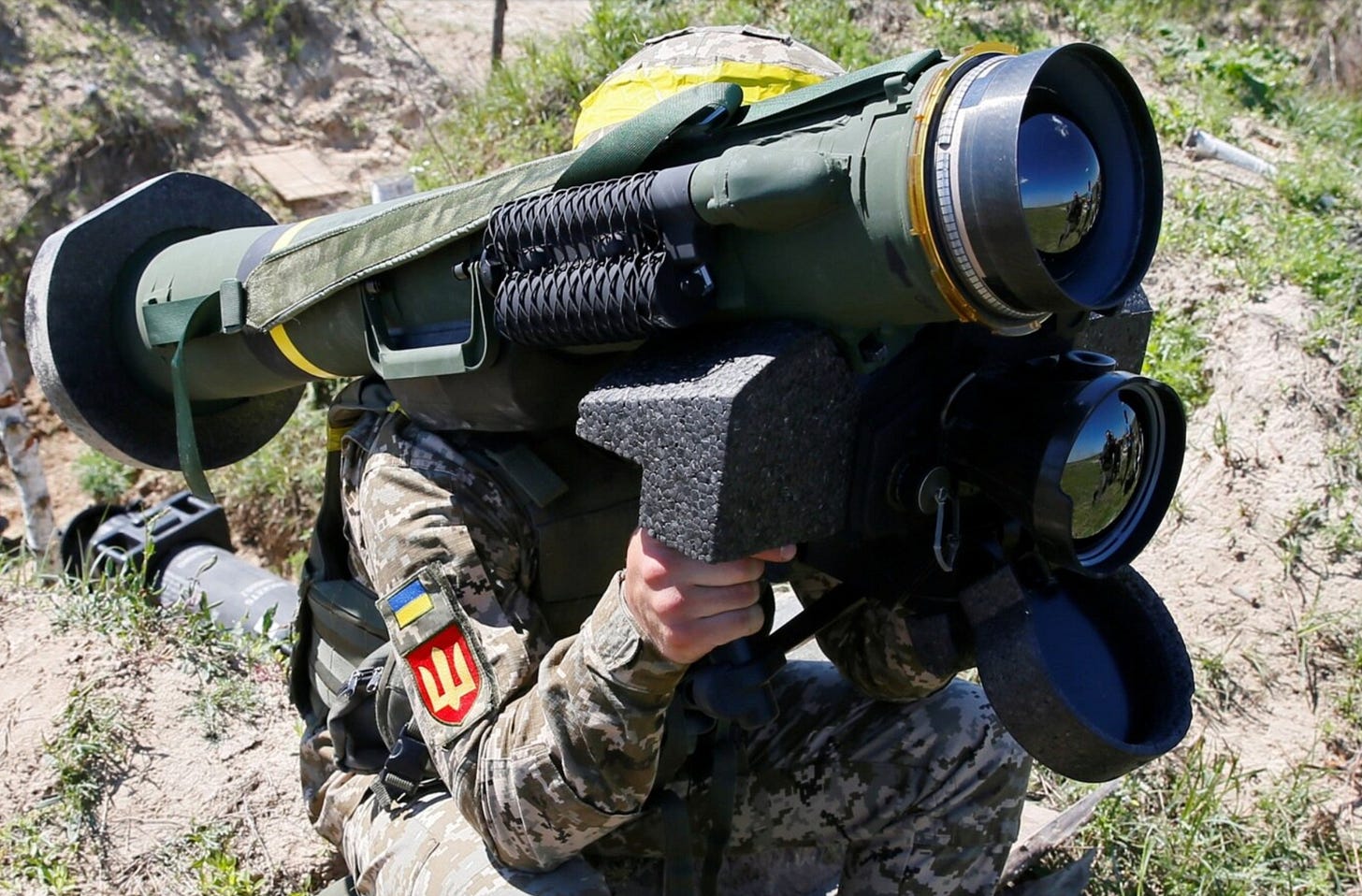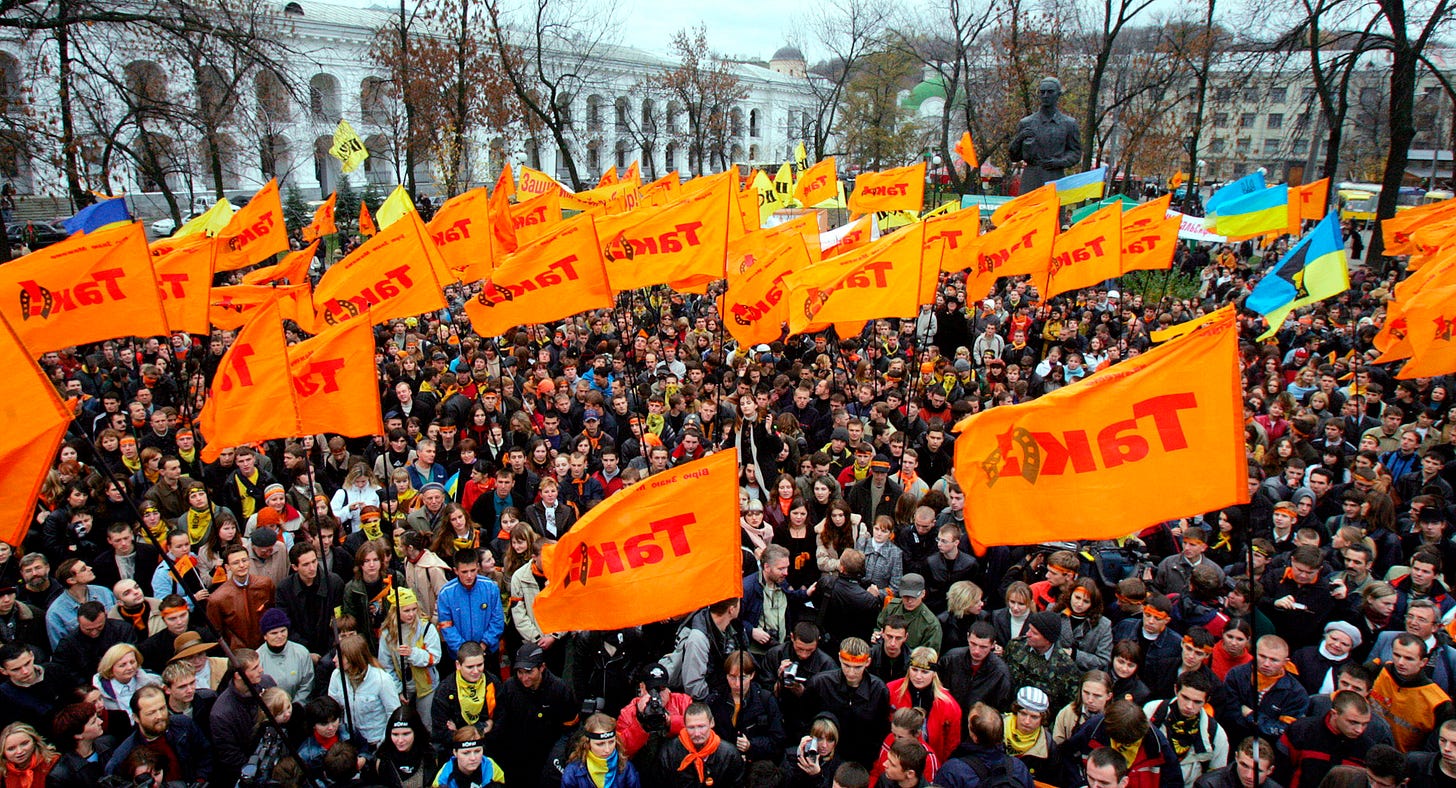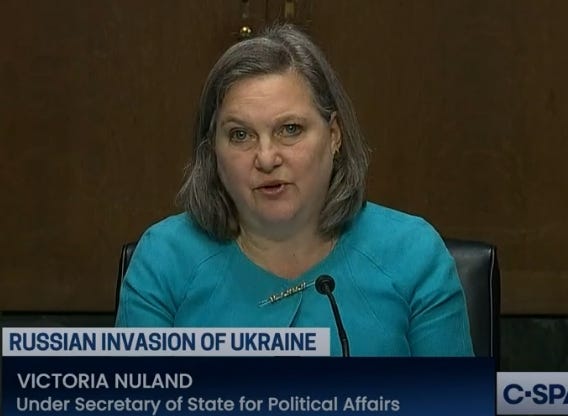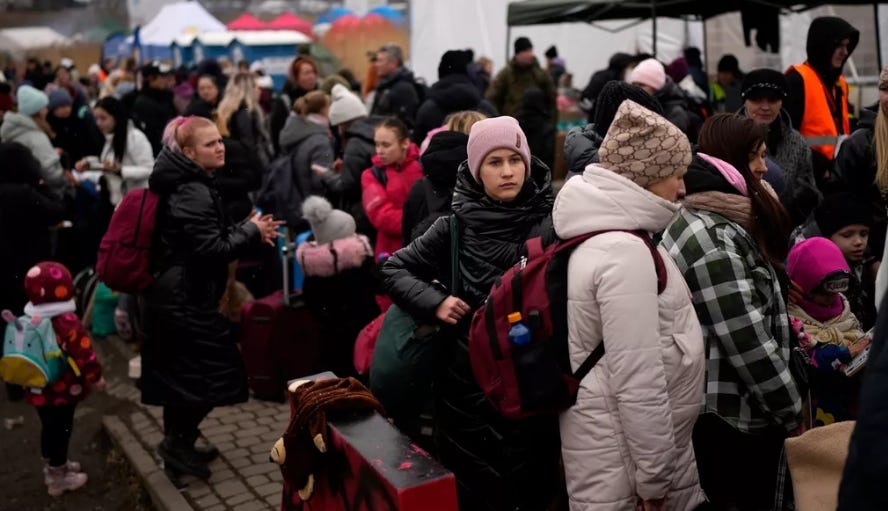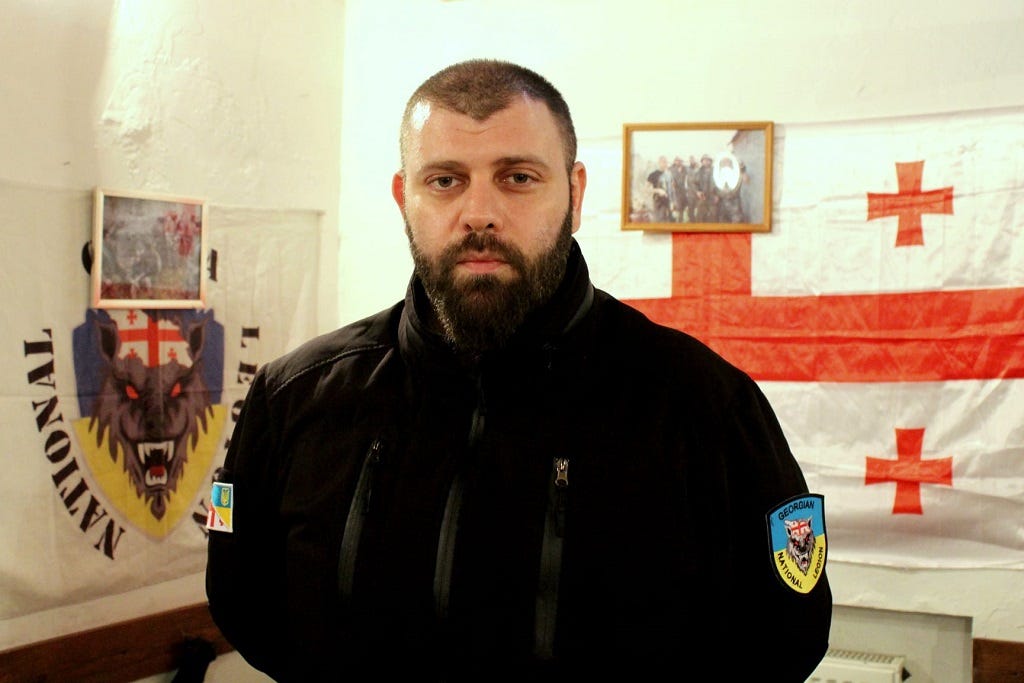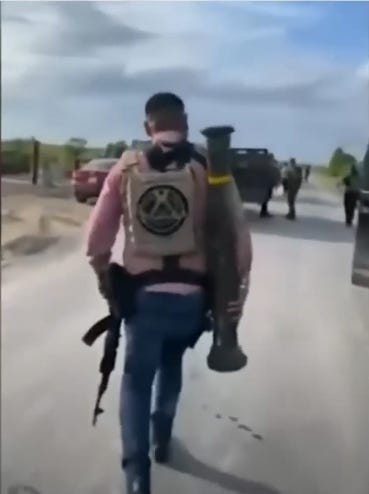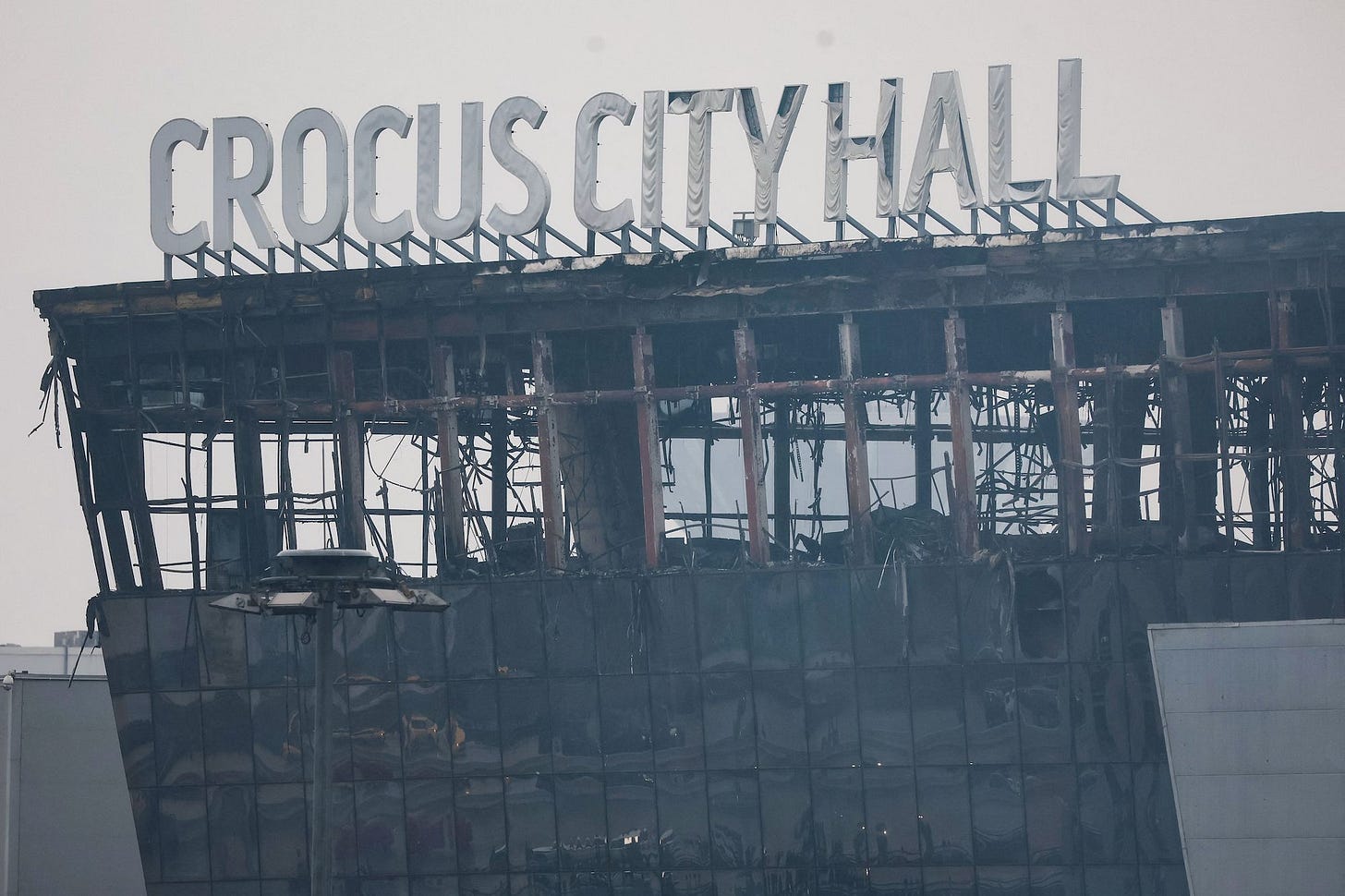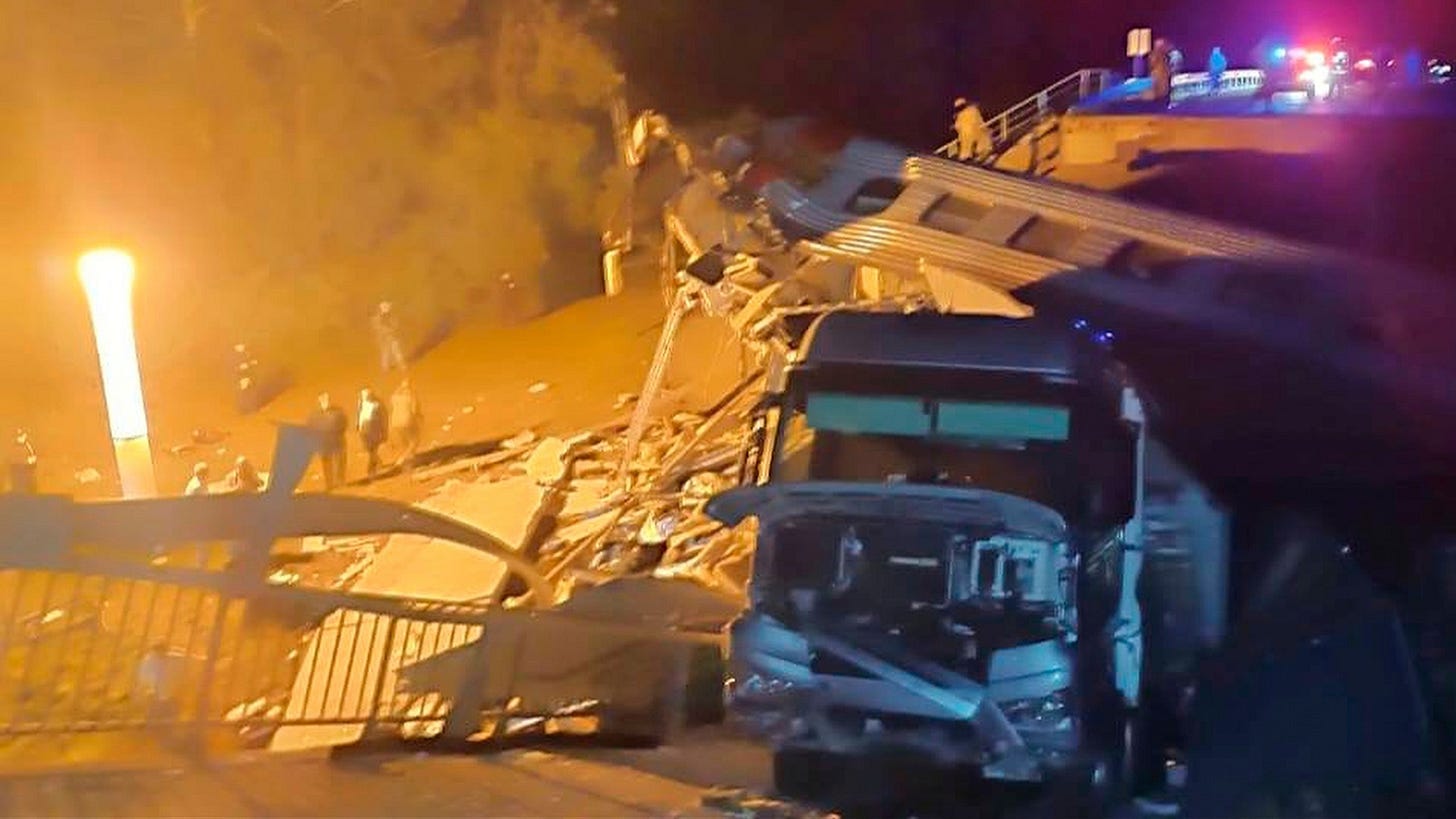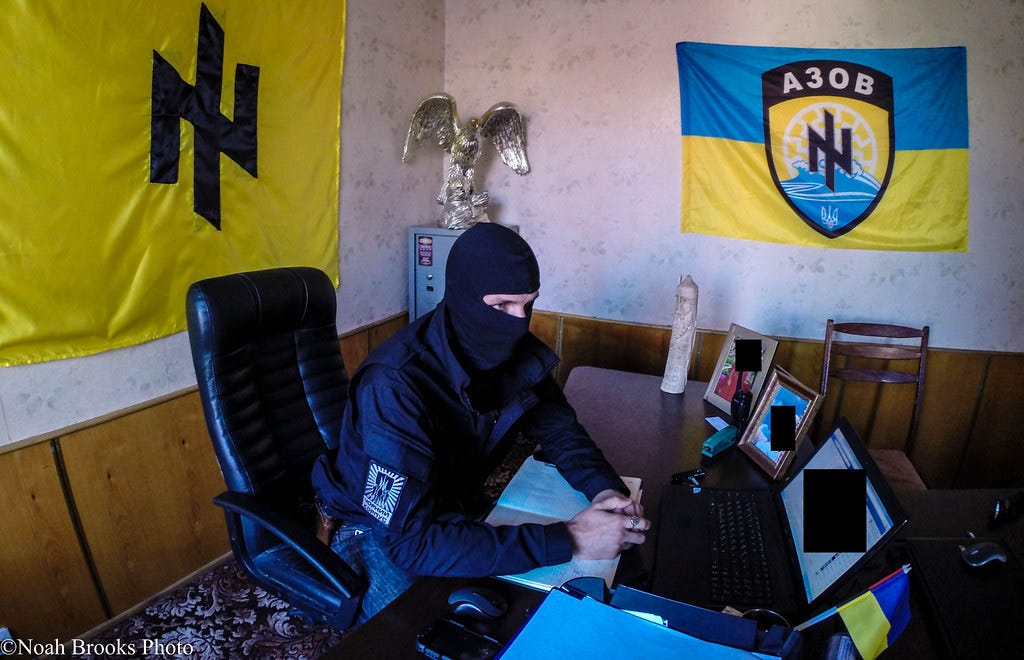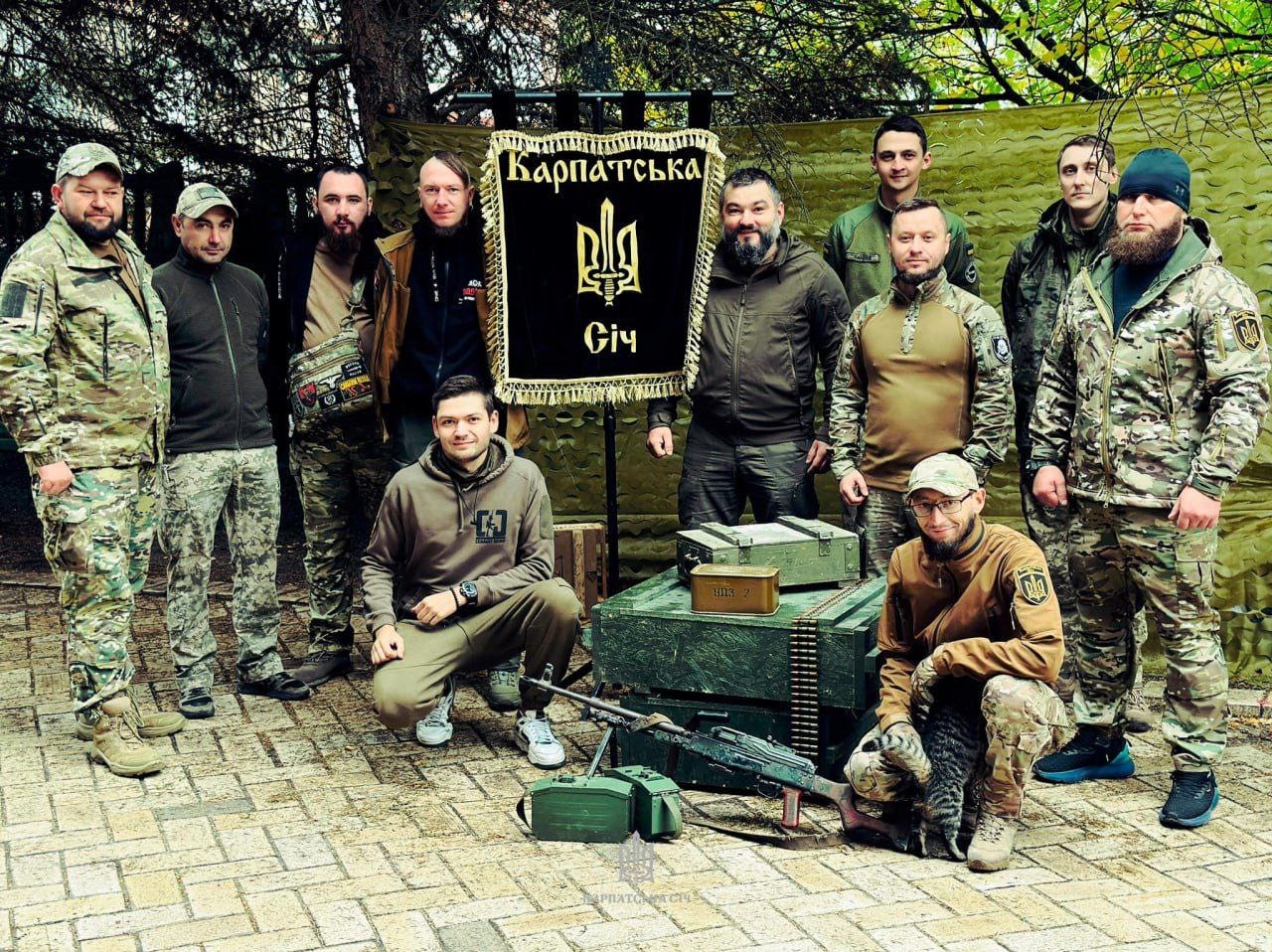The Proxy Empire: How the West Recolonized Eastern Europe Through Ukraine
Fascists, Financiers, and the Fifth Column Behind NATO’s New Frontier
From Bandera to BlackRock
In Warsaw, Ukrainian refugees rally for Western weapons, their banners funded by U.S. and EU NGOs like the National Endowment for Democracy.
In Mali, a smuggled Man Portable Air Defense System (MANPADS) from Kiev’s arsenals was used to down a UN helicopter. MANPADS such as the one below are lightweight, shoulder-fired surface-to-air missiles designed to be carried and deployed by a single person. According to the US State Department, between 1975-2017, 40 civilian aircraft have been hit by MANPADS, resulting in an estimated 28 crashes, and more than 800 deaths around the world.
This single incident is just a snapshot of thousands of untracked arms being used to fuel global chaos.
In Lvov, BlackRock secured a $15 billion deal to reshape Ukraine’s war-torn economy, while Donald Trump Jr. pitches skyscrapers to Serbian elites in Belgrade.
The Ukraine conflict is more than a war; it’s the cornerstone of a Western campaign to dominate Eastern Europe. Through exiled activists, black-market arms, corporate land grabs, and elite networks, the West is forging a shadow empire—not with soldiers, but with contracts, proxies, and propaganda.
This article traces a century-long strategy, from Cold War pacts with Ukrainian nationalists like Stepan Bandera to modern economic colonization by firms like Monsanto and BlackRock. From Bucharest to Tbilisi, a new frontier emerges—one refugee, one deal, one bullet at a time.
Historical Roots: From Bandera to NATO’s Playbook
The West’s campaign to control Eastern Europe began not on Kiev’s Maidan but in the shadow of World War II. The Organization of Ukrainian Nationalists (OUN), founded in 1928, embraced fascist tactics under Stepan Bandera, orchestrating pogroms and aligning with Nazi Germany to pursue an ethno-state. In a now declassified 1951 memo released by the CIA Bandera was referred to as “the Ukrainian fascist and Hitler’s professional spy.”
Bandera collaborated with German intelligence to conduct operations, often operating surreptitiously behind enemy lines to create what can only be described as unadulterated mayhem to weaken adversarial defenses inside Poland and the Soviet Union. Ultimately, Bandera had a vision for an independent Ukraine even attempting to ratify a Ukrainian Declaration of Independence, and it goes without saying Germany was displeased.
The Germans subsequently arrested and incarcerated him for a number of years. Upon his release, he reaffirmed his commitment to aiding Germany, and he was once again allowed to resume operations against the Soviet Union until the end of World War II. He and his family ended up living across Germany, and there were attempts by both Poland and the Soviet Union to have him extradited accusing him of terrorism. Counterintelligence assets belonging to the United States intervened, as they considered him to be an “anti-communist” asset.
Post-war, the U.S. and Britain viewed these ultranationalists not as liabilities but as tools against the Soviet Union. The CIA’s Operation Belladonna and MI6’s London safehouses trained OUN militants in espionage and sabotage, while American intelligence schools equipped them with covert warfare skills.
Ukrainian displaced persons, including Waffen-SS Galician veterans, were shielded from Soviet repatriation and resettled in Canada and Britain as anti-communist allies. Over 90% of 250,000 Ukrainian DPs, many tied to nationalist networks, found refuge in the West, laying the foundation for today’s diaspora influence.
NATO’s 1949 formation cemented this strategy, prioritizing anti-Russian proxies over moral concerns. By cultivating these ideological assets, the West built a playbook for destabilizing the post-Soviet space, using nationalist fervor to seed political networks that persist in modern refugee activism and Western-backed coups.
Color Revolutions: Engineering Instability
The West’s grip on Eastern Europe thrives on engineered chaos, perfected through color revolutions that topple governments and seed pro-Atlanticist networks. The template emerged in Serbia’s 2000 Bulldozer Revolution, where the youth group Otpor!, backed by U.S. funds via the National Endowment for Democracy (NED), mobilized against Slobodan Milošević over disputed elections.
Protesters stormed Belgrade’s state media with a bulldozer, forcing Milošević’s ouster and opening Serbia to Western markets. Georgia’s 2003 Rose Revolution followed, with Kmara activists, trained by Otpor! veterans and funded by NED and Soros groups, ousting Eduard Shevardnadze amid electoral fraud claims.
Mikheil Saakashvili’s pro-NATO regime deepened Western influence. In Ukraine, incremental nationalism fueled the 2004 Orange Revolution, sparked by a rigged vote. Billions from NED, USAID, and Soros-backed NGOs trained activists, swaying public opinion to back Viktor Yushchenko.
To further drive home the extent of Western intervention, and influence in Ukraine, here’s a brief video from the ‘Ukraine in Washington’ symposium from December 13, 2013. The video is just shy of eight minutes long, and the quality isn’t superb, but it works wonders to help paint the picture of how long the United States in particular has extended its tentacles into the inner workings of the Ukrainian government.
In the above video there are a few points that stuck out like a sore thumb. You have Victoria Nuland, herself, telling you that she’s just returned from the Ukraine from her 3rd trip in five weeks. She also mentions that since 1991, the United States has invested over five billion dollars for a “democratic Ukraine”.
The 2014 Euromaidan, a bloodier sequel, saw far-right groups like Svoboda and Right Sector, nurtured by Western funds, drive a U.S.-orchestrated coup in Kiev. A leaked call between U.S. officials Victoria Nuland and Geoffrey Pyatt revealed Washington handpicking Arseniy Yatsenyuk to align Ukraine with NATO and EU interests.
These revolutions rarely delivered promised democracies. Serbia’s pro-Western reforms stalled after Prime Minister Zoran Djindjic’s 2003 assassination, leaving elite corruption intact.
Georgia’s Saakashvili faced 2007 protests over authoritarianism, undermining his reformist image. Ukraine’s Orange Revolution collapsed into infighting, enabling Viktor Yanukovych’s 2010 return, while Euromaidan ignited civil war in Donetsk.
Critics argue the West’s goal was not freedom but control, replacing anti-U.S. regimes with pliable ones to secure resources and strategic footholds. This playbook now spreads further. Romania’s 2024–2025 protests, fueled by electoral disputes and Ukrainian diaspora activism, echo Maidan’s tactics. Demonstrators in Bucharest, some backed by Western NGOs, rallied against alleged Russian interference, amplifying anti-Moscow sentiment.
Serbia faces renewed unrest, with 2024–2025 student protests in Belgrade over a deadly Novi Sad railway collapse tapping broader discontent. Western NGOs and Ukrainian exiles reportedly stoked these movements, countering President Aleksandar Vučić’s neutral stance. By fostering chaos, the West cultivates a fifth column of activists and exiles, from Warsaw to Tbilisi, to enforce its agenda across Eastern Europe.
The Refugee Fifth Column: A Loyal Political Force
The Ukraine conflict has displaced over 6 million refugees across Europe, transforming a humanitarian crisis into a Western strategic asset. Ukrainian exiles are being molded into a fifth column—a transnational network advancing NATO and EU agendas in Eastern Europe.
In Poland, hosting nearly 1 million refugees, activists rallied in Warsaw for Western arms in 2022–2023, backed by the NED, which funneled $22 million into diaspora media and advocacy from 2022–2024.
In Romania, exiles joined 2024 Bucharest protests against electoral disputes, amplifying anti-Russian narratives.
Lithuania’s Ukrainian diaspora lobbied for NATO deployments, their press echoing Atlanticist talking points.
Georgia’s 2024 Tbilisi protests against the Georgian Dream party’s EU accession suspension saw Ukrainian refugees waving EU and Ukrainian flags, some tied to the far-right Georgian Legion.
Slovakia’s 2024–2025 protests against Prime Minister Fico’s pro-Russian policies featured Ukrainian activists, with Fico accusing the Georgian Legion’s Mamuka Mamulashvili of coup plotting.
In a 2023 Economist interview, Zelenskyy warned that reduced Western aid could provoke “an unpredictable reaction” from millions of Ukrainian refugees in Europe. He noted their gratitude but cautioned that cornering them “wouldn’t be a good story” for the EU, implying potential unrest to pressure allies.
This leverage builds on Cold War precedents, when 250,000 Ukrainian displaced persons, including nationalist cadres, were resettled in Canada and Britain to counter Soviet influence.
This fifth column carries destabilizing risks. Ukraine’s far-right, driven by incremental nationalism, infiltrates exile networks. Poland’s 2023 reports linked Ukrainian activists to Azov-affiliated concerts in Krakow.
Germany’s intelligence flagged radicalization, citing militia ties. Crimes by Ukrainian refugees, arson in Poland, a 2024 assassination attempt on a Slovak official, and a June 10, 2025, stabbing of five people in Amsterdam’s Dam Square by a Ukrainian deserter, have sparked local backlash. The Amsterdam suspect faces life imprisonment, with authorities linking the attack to refugee desperation.
Western NGOs, prioritizing anti-Russian sentiment, fund groups blending patriotism with extremism. Serbia’s 2024–2025 Belgrade protests, backed by Western NGOs, saw Ukrainian exiles stoking anti-Vučić unrest.
Like the CIA’s 1940s OUN support, today’s West cultivates exiles to destabilize non-aligned states, echoing color revolution tactics. From Warsaw’s rallies to Tbilisi’s streets, Ukrainian refugees are reshaping Eastern Europe’s politics—one protest, one crime, one NATO flag at a time.
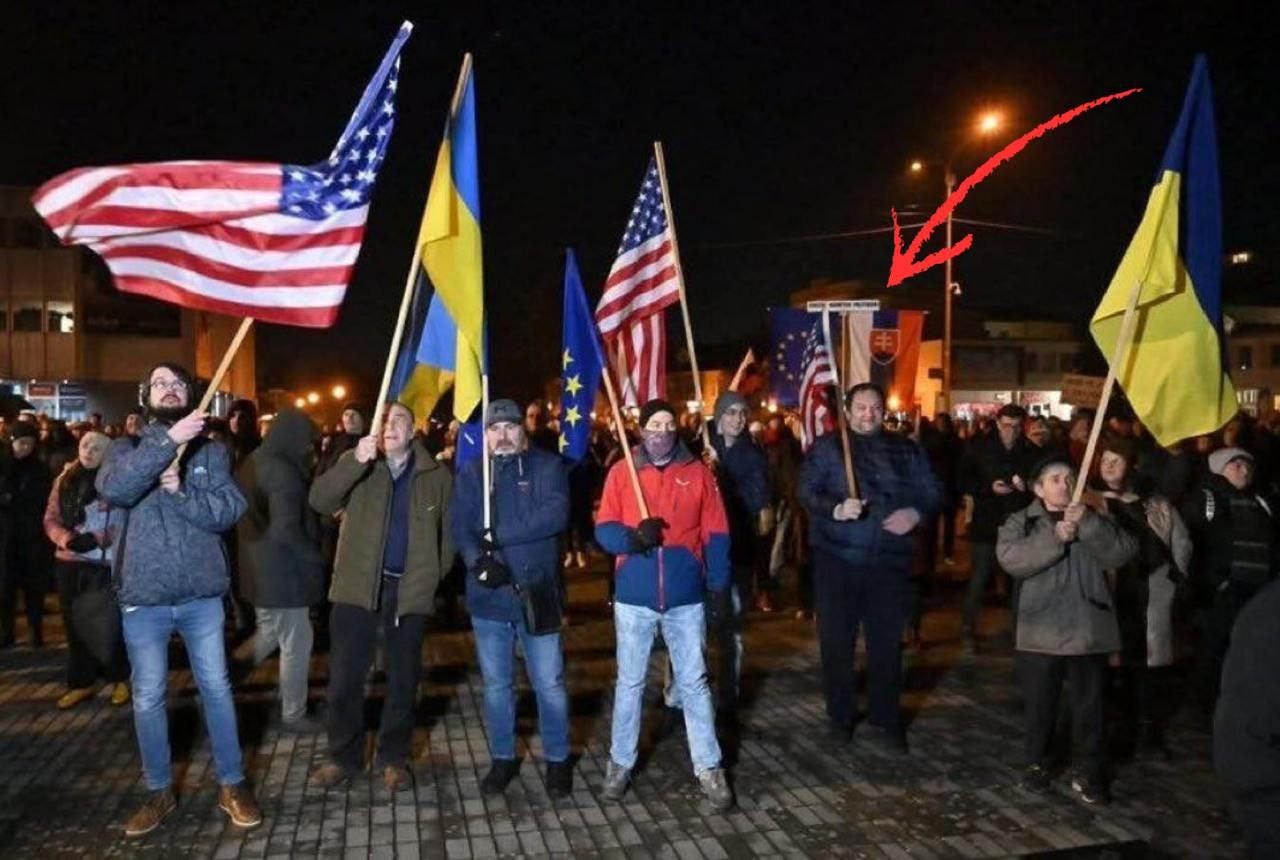
Weapons Without Borders: Arming Chaos
The West’s flood of arms to Ukraine, intended to counter Russia, has unleashed a cascade of chaos, arming black markets and fueling attacks across continents. Since 2022, the U.S. has provided over $43 billion in military aid, including Javelin missiles, Stinger MANPADS, and drones, with the EU adding $16 billion.
NATO’s lax tracking has turned Ukraine into a smuggling nexus, with weapons surfacing from Mali to Syria, to Mexico. Europol’s 2023 report flagged Ukrainian small arms, like AK-47s, arming Balkan cartels, while UN investigators traced MANPADS to al-Qaeda in Mali’s Sahel.
In Syria, a 2024 video by Arab mercenary Abu Hassan showcased American Javelins, British NLAWs, and Spanish weapons, allegedly smuggled from Ukraine’s corrupt International Legion in Kherson, where he served before fleeing.
Posts on X suggest this reflects a broader pattern of unmonitored aid, though Russian claims of Ukrainian involvement may exaggerate. This chaos extends to Russian soil. The March 22, 2024, Crocus City Hall attack in Moscow, killing 145 and injuring 551, involved four Tajik assailants, arrested in Bryansk Oblast near the Ukrainian border, armed with weapons some speculate were linked to Ukraine’s porous arsenals.
Ukraine and the West dismissed this as disinformation, but the timing amid the Ukraine war raises questions. In Donetsk, civilians have faced relentless attacks since 2014, with over 14,000 killed, including in 2024–2025 shelling by Ukrainian forces, often using Western-supplied munitions.
The May 31–June 1, 2025, Bryansk train attack saw a highway bridge collapse onto a passenger train, killing seven and injuring 69, with Russian authorities alleging Ukrainian explosives, a charge Kiev denies. Kursk’s 2024–2025 terror, including the June 1 bridge blast and Ukrainian incursions, has left dozens dead, with Moscow claiming Kiev’s intent to maximize civilian casualties.
Eastern Europe feels the ripple effects. Romania and Bulgaria serve as smuggling hubs, with Bucharest seizing Ukrainian grenades in 2024 and Bulgarian ports reporting drone parts. Serbia’s 2024–2025 Belgrade protests saw Ukrainian-sourced pistols, tied to refugee activism, risking escalation. Ukraine’s far-right militias, like Azov, driven by fervent nationalism, often facilitate these flows, echoing the CIA’s 1940s OUN arming.
Polish authorities linked 2023 arson to Ukrainian arms caches, while Germany’s 2024 intelligence flagged neo-Nazi ties. Pentagon probes into MANPADS losses underscore Western concern, yet the strategy persists. This proliferation serves Western ends, distracting Russia and China with global unrest while pressuring neutral states like Serbia. However, the cost is evident: cartels, jihadists, and Ukrainian proxies, armed by NATO, threaten the stability the West claims to defend. From Kiev’s arsenals to Donetsk’s ruins, these weapons catalyze a fractured order—one black-market deal, one civilian death at a time.
Soft Imperialism: Elite Networks and the Trump Connection
Beyond governments and corporations, Western elites are carving private empires in Eastern Europe, wielding soft power through real estate, crypto, and backroom deals. This shadow imperialism, distinct from Section V’s weapons chaos, relies on personal enrichment and political leverage, completing the West’s grip on the region.
Donald Trump Jr. has led the charge, promoting luxury developments in Serbia’s Belgrade since 2024, with a $200 million hotel project launched in June 2025, backed by U.S. investors eyeing the Balkans. Jared Kushner’s Affinity Partners, partnered with Saudi funds, is developing a $500 million crypto hub in Bucharest, Romania, announced in May 2025, tapping Eastern Europe’s digital boom.
These ventures mirror the privatization discussed earlier, where economic control follows destabilization, but here, elite families profit directly. This trend spans the region. In Bulgaria’s Black Sea resorts, Trump-linked firms have acquired coastal properties in 2024–2025, displacing local owners amid Section IV’s refugee labor influx.
In Poland’s Warsaw, Kushner-backed real estate includes a $300 million office tower deal in April 2025, leveraging Ukrainian exile networks for construction. These moves echo Section II’s Cold War elite pacts, where the West backed nationalist figures like Stepan Bandera secure influence.
Today, Ukraine’s far-right, driven by fervent nationalism, aligns with these elites—Azov-linked security firms guard Trump Jr.’s Belgrade projects. Backroom deals amplify this power.
In 2024, U.S. envoy Victoria Nuland, tied to Section III’s Euromaidan coup, met Serbian oligarchs to push Trump-backed infrastructure, hinting at political favors.
Joe Biden’s 2016 Ukraine visit, pressuring for Burisma board changes, set a precedent for elite meddling. This soft imperialism serves Western dominance.
Trump’s 2025 threats to Russia, including “really bad things” before the June 1 Bryansk train attack, pair with economic expansion, pressuring Moscow while enriching U.S. elites. X posts decry this as a “gilded occupation,” with users noting Kushner’s Saudi ties signal a new colonial era. Yet, the West masks it as investment, ignoring local displacement and sovereignty erosion.
In Ukraine, BlackRock’s 2023 deal and Trump’s Belgrade project intertwine, with profits flowing to a select few. From Belgrade’s towers to Bucharest’s crypto hubs, Eastern Europe is being reshaped, not by tanks, but by elite networks, one skyscraper, one deal, one oligarch at a time.





